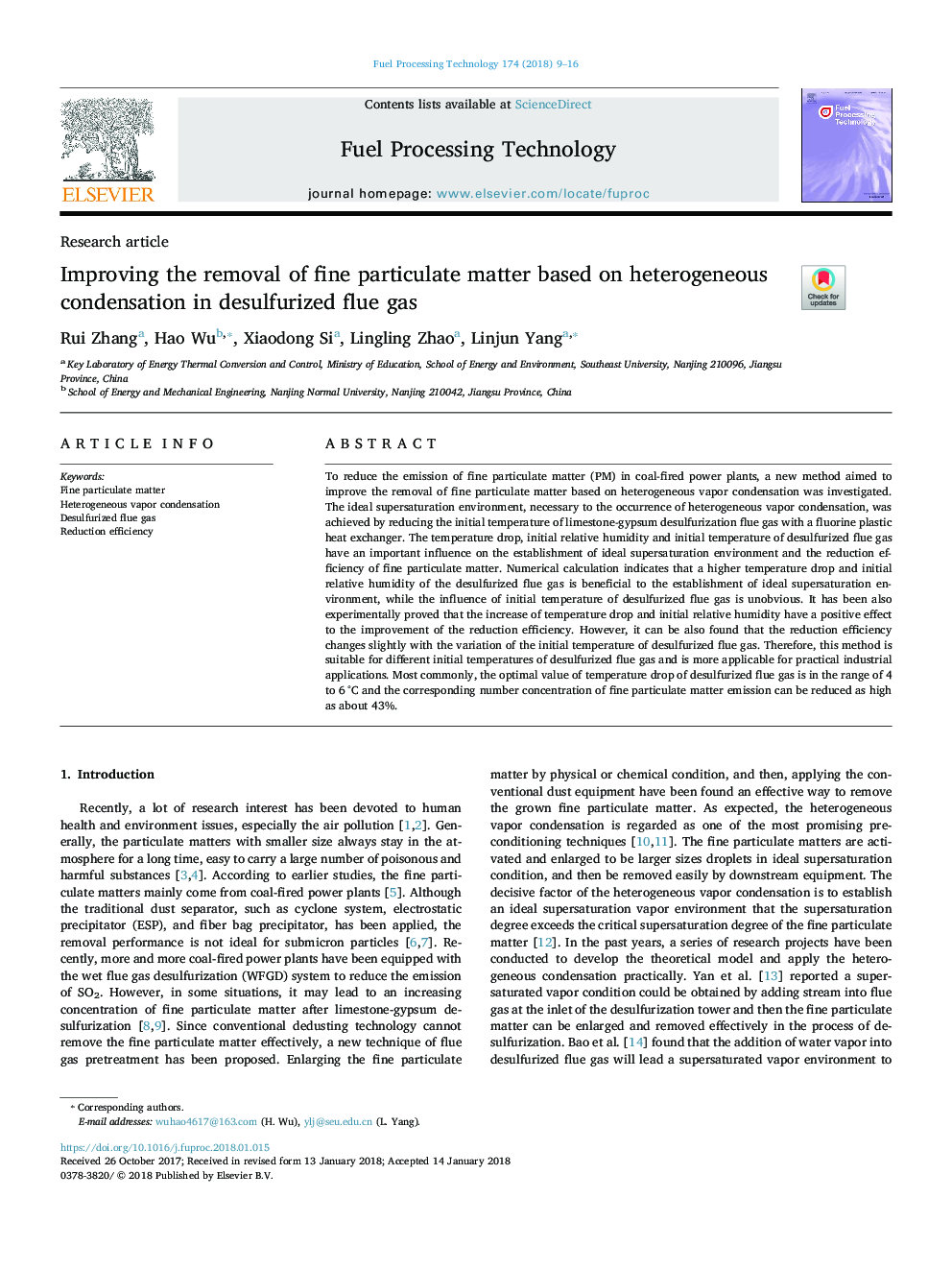| Article ID | Journal | Published Year | Pages | File Type |
|---|---|---|---|---|
| 6656402 | Fuel Processing Technology | 2018 | 8 Pages |
Abstract
To reduce the emission of fine particulate matter (PM) in coal-fired power plants, a new method aimed to improve the removal of fine particulate matter based on heterogeneous vapor condensation was investigated. The ideal supersaturation environment, necessary to the occurrence of heterogeneous vapor condensation, was achieved by reducing the initial temperature of limestone-gypsum desulfurization flue gas with a fluorine plastic heat exchanger. The temperature drop, initial relative humidity and initial temperature of desulfurized flue gas have an important influence on the establishment of ideal supersaturation environment and the reduction efficiency of fine particulate matter. Numerical calculation indicates that a higher temperature drop and initial relative humidity of the desulfurized flue gas is beneficial to the establishment of ideal supersaturation environment, while the influence of initial temperature of desulfurized flue gas is unobvious. It has been also experimentally proved that the increase of temperature drop and initial relative humidity have a positive effect to the improvement of the reduction efficiency. However, it can be also found that the reduction efficiency changes slightly with the variation of the initial temperature of desulfurized flue gas. Therefore, this method is suitable for different initial temperatures of desulfurized flue gas and is more applicable for practical industrial applications. Most commonly, the optimal value of temperature drop of desulfurized flue gas is in the range of 4 to 6â¯Â°C and the corresponding number concentration of fine particulate matter emission can be reduced as high as about 43%.
Related Topics
Physical Sciences and Engineering
Chemical Engineering
Chemical Engineering (General)
Authors
Rui Zhang, Hao Wu, Xiaodong Si, Lingling Zhao, Linjun Yang,
